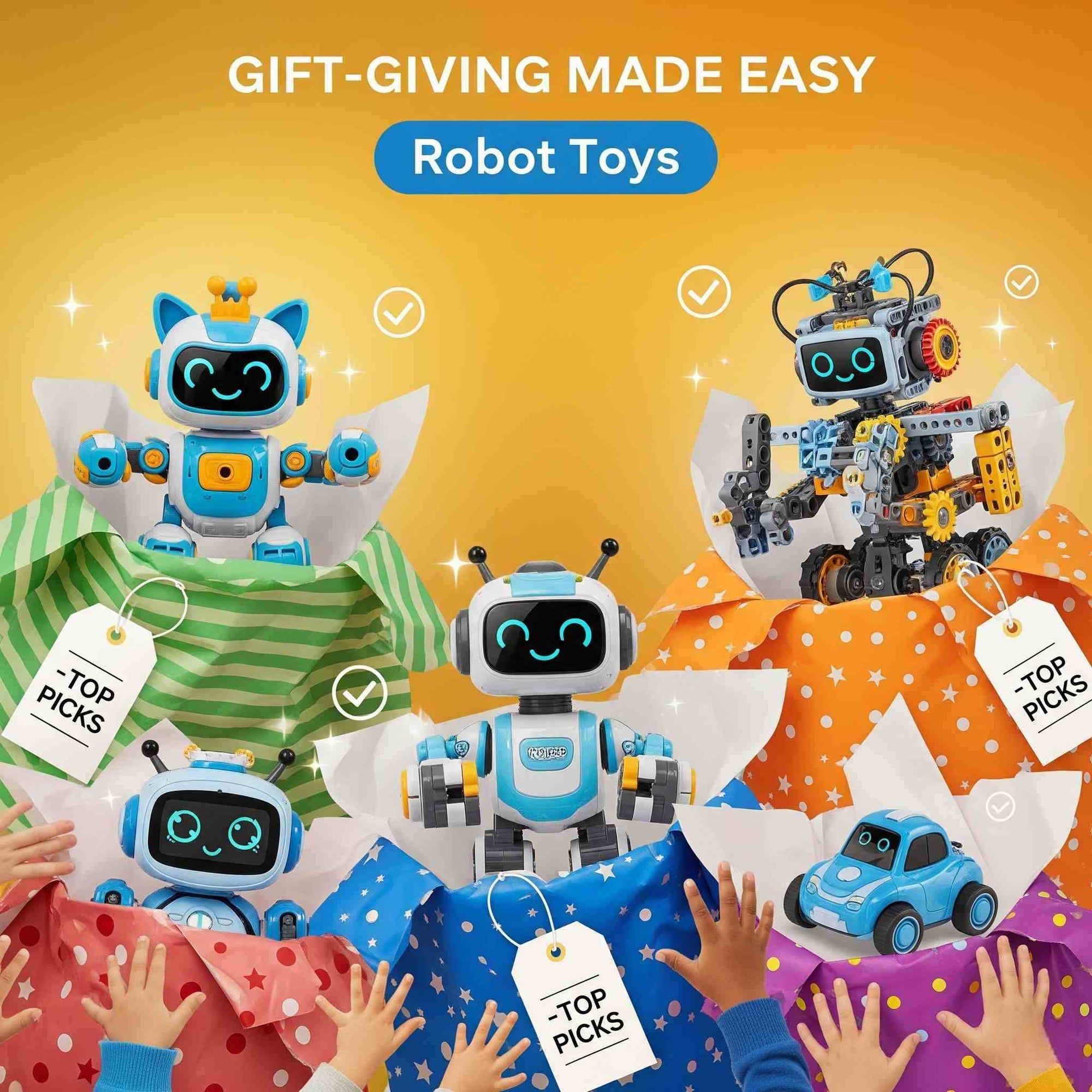What is meant by a Humanoid Robot?
A humanoid robot looks like and behaves like a human. Robots can now carry out various tasks from simple interactions to more complicated procedures because they have sensors, actuators and artificial intelligence.
The field of humanoid robots has moved forward due to the progress of AI and robotics. They are currently used in healthcare, classrooms, and to help out at home.

With humanoid robots, people can engage in less complicated and more familiar ways than before. Because of how they look and behave, synthetics are well-suited to jobs where social skills and adaptability are needed.
Why Are Humanoid Robots Gaining Popularity Worldwide?
Humanoid robots are better able to interact with humans than most traditional automation tools. They become useful in many places because they can understand people’s feelings and obey instructions.
1- Benefits of Humanoid Robots:
-
Users can now take part in natural and open exchanges.
-
The ability to carry out many types of tasks in any environment.
-
Serve as companions and lend a hand, most importantly, benefiting the elderly and people who live with disability.
2- Target Audiences:
-
Children are interested in both educational and fun materials.
-
As people who keep you company and help with daily activities.
-
People who like exploring the latest technological developments.
Important Features of Today’s Humanoid Robots

Emotional Interaction and Learning Ability:
A person’s ability to interact emotionally and their ability to learn
Because of AI, current humanoid robots respond differently as they gain experience through interactions with people. They can notice who is standing in front of them, understand their feelings, and react suitably for an improved experience.
Easy distance communication and individual data access:
Many of these robots include compatibility through apps, meaning you can monitor and control them from another location. People can change the robot’s settings, check for updates, and take control of its functions from a distance.
Educational, Playful, and Exciting Functions:
They do more than help; humanoid robots also offer enjoyment and learning experiences. You can use robots for games, stories and learning, so they fit well for everyone wanting to connect through play.
Humanoid Robots vs Traditional Automation Tools
Traditional automation tools are different from humanoid robots.
While traditional automation machines are limited to one or two tasks, humanoid robots use their AI to perform many more different functions.
Comparison:
-
Responsiveness: Humanoid robots can adjust to different tasks and settings, which traditional tools cannot do.
-
Engagement: Humans interact with chatbots in natural ways, which makes them pleasant and easy to use.
-
Lifespan: Because they are flexible and improve with new information, humanoid robots continue to be relevant and work longer than objects that do not change.
Benefits:
-
Cognitive Development: Help your child use their brain to solve problems and learn.
-
Emotional Comfort: Provide your pet with company, comfort, and ease feelings of loneliness.
Understanding the Downsides of Investing in a Humanoid Robot
While humanoid robots can bring a lot of opportunities, we must also understand the issues that this fast-developing technology presents. The following are some important challenges:
1. It costs a lot to maintain a pet:
The expense of the initial investment for advanced humanoid robots ranges from thousands to tens of thousands of dollars. Many robots need to have their software updated from time to time and their hardware carefully serviced. Many households and small businesses find the expensive price of these products to be a big problem.
2. There is not much experience of the world available to AI:
-
AI in robots is continuing to grow: Most humanoid robots still have trouble with the details of how humans act and communicate.
-
Not able to work independently: They mainly depend on people providing them with programming or supervising their actions.
3. Challenges seen in the Real World:
-
Navigation issues: Certain humanoid robots may have trouble moving on stairs, uneven levels or areas full of obstacles.
-
Lack of movement: Many models may have certain limbs, but they tend to move less efficiently or can only move very little.
4. Concerns about one’s privacy and the safety of personal information:
-
Always-connected devices: Models that access the internet at all times are getting popular, which can introduce risks to your data and privacy.
-
Surveillance risks: Robots could be exploited if someone gains access to them through hacking or incorrect configurations.
5. Customization Limitations:
-
Not all robots are flexible: There are robots designed for exact tasks, so they are not always capable of doing other jobs.
-
Difficult for non-tech users: Array users who aren’t skilled in technology often have problems when it comes to customizing, linking with other software or coding.
6. Ethical and Emotional Matters:
-
Overreliance: Because of their attachment to humanoid robots, people could start to alter their social behavior.
-
Philosophical debate: As smart machines develop and look more like people, people wonder about their social responsibilities and interactions with humans.
Practical Use Cases of Humanoid Robots in Daily Life
Tools and Resources for Children:
Interactive robots designed as humans can provide children with assistance on projects, homework, foreign language lessons and mental development through fun games.
Services for Older Adults and Single Adults:
They help lonely seniors by offering company, giving medicine reminders and assisting with their daily activities which improves their lives.
Get extra services and protection:
As well as help, humanoid robots can make the whole family happy by playing games and telling entertaining stories. There are home security models that allow home monitoring and send an alert when something unusual is detected.
How Humanoid Robots are Changing How We Work Today?
The development of technology is allowing robots of the humanoid type to play a role in the working world as well as in labs and homes. Numerous businesses from different industries are now looking into how human-like robots can increase efficiency, share the burden and interact better with customers.
1. Customer Services and Front Desk Positions:
-
Reception bots: Many hotels, as well as office buildings, introduce humanoid robots to greet guests, help with directions, and handle basic questions.
-
24/7 availability: The robot can provide customer care at any time, unlike human employees who get tired and need to rest from their work.
-
Better connection: These robots can notice returning customers and interact with them in a personal way using AI and facial recognition.
2. Healthcare and care for the elderly:
-
Companion robots for patients: Humanoid robots in hospitals provide moral support, take part in routine medical checks, and keep patients by their side.
-
Medication reminders: In care facilities, they can alert patients when it's time to take medication or hydrate.
-
Non-contact assistance: It is best to use this service during pandemics because it keeps contact between people to a minimum which is very important.
3. Manufacturing and Warehousing:
-
Support duties: Humanoid robots can assist by doing data entry, handling inventory, and inspecting products.
-
Human-robot collaboration: In smart factories, humanoid robots and people join forces which raises the efficiency and responsiveness of the work environment.
4. Programs and courses:
-
Teaching assistants: Humanoid robots are used in schools or training centers to teach, translate, and practice conversations with students.
-
Interactive learning: Students are more involved in the subject because of interactive technology, namely in STEM disciplines.
5. Retail and Hospitality:
In-store guidance: Shopping centers use humanoid robots to guide customers where needed and to answer their questions.
Entertainment value: While they are there, the brand looks more attractive and gives the public a glimpse of the digital age.
Advantages of Workplace Integration:
-
Increases both productivity and efficiency.
-
Lowers overhead expenses as time passes.
-
Helps increase the happiness of customers and staff.
-
Adapts quickly to routine tasks with AI training.
How to Pick the Right Humanoid Robot for Your Requirements?
Because there is such a large variety, you have to take time to think about what you require, like, and expect from a humanoid robot. Here's a comprehensive guide to help you make an informed decision:
What do you want to accomplish?
Start by figuring out what the humanoid robot is meant for. Perhaps you want to get your kids an educational helper, use an assistant for everyday tasks, look after your elderly relative with one, or buy a gadget for entertainment and smart use? Being sure about your purpose will allow you to easily rule out models that don’t meet your requirements.
Look at the list of features and technical qualities:
What each humanoid robot can do depends on its capabilities. Make sure to study these characteristics.
-
Battery life: How much time can it last on one charge?
-
Movement and mobility: Is it able to walk, wave, or do other gestures?
-
AI capabilities: Voice recognition, facial detection, and emotional
-
App integration: Can it be controlled remotely via smartphone apps?
-
Language support and adaptability: Does it offer multilingual interaction or the ability to learn new phrases?
They are important because they influence the robot’s performance in the environment you have planned.
Examine and understand brands' perceptions:
Check for testimonials, comments, and product reviews on the internet. If a brand is well-known, you can trust it for dependable service, updated software, and extra support after your purchase. Getting a robot from a top brand helps you avoid accidents and enjoy lasting satisfaction.
Make sure the equipment is updated over the years:
Be sure that the robot supports the systems and devices in your home such as smart home gadgets and the right operating systems. Another thing to remember is that the model should be able to be updated as new technologies come out.
Thinking about these factors will allow you to choose a humanoid robot that matches your way of living, finances, and plans.
Comparison of Popular Humanoid Robots
|
Robot
|
Purpose
|
Mobility
|
AI Capabilities
|
Price
|
Support
|
|
SoftBank’s Pepper
|
Customer service, social interaction
|
Wheeled
|
Emotional recognition, conversation
|
~$16,000
|
Good customer support
|
|
Boston Dynamics’ Atlas
|
Research, industrial applications
|
Bipedal
|
Advanced navigation, manipulation
|
>$100,000
|
Primarily for research
|
|
NAO by SoftBank
|
Education, research
|
Bipedal
|
Programmable, task-specific
|
~$10,000
|
Extensive documentation
|
|
Moxi by Diligent Robotics
|
Healthcare assistance
|
Wheeled
|
Task-specific AI for hospitals
|
Not disclosed
|
Tailored for healthcare
|
This table helps compare key features, aiding your decision-making process. For visuals, consider watching videos of Pepper in retail settings or Atlas navigating obstacles.
Warranty and Support
Given the high cost and complexity of humanoid robots, warranty and support are critical. Look for:
-
Comprehensive Warranty: Most manufacturers offer 1-2 year warranties covering hardware defects.
-
Technical Support: 24/7 customer service for troubleshooting, as provided by SoftBank for Pepper and NAO.
-
Software Updates: Regular updates to enhance AI and functionality, crucial for long-term use.
-
Training Programs: To optimize Moxi's efficacy, some businesses, such as Diligent Robotics, provide training for medical personnel.
Selecting a trustworthy manufacturer reduces maintenance difficulties and guarantees dependability.
Final Thoughts:
The invention of humanoid robots brings a major shift in the history of AI and robotics. What was once a science fiction idea is now becoming a fact in our everyday experiences. They are changing the way we use technology by giving companionship, support and by helping with everyday jobs, schoolwork and work at the office.
With new abilities such as facial recognition, processing language the way humans do, and responding to changes in an instant, humanoid robots are showing us they are more advanced than traditional machines. They are there to help the elderly, play with children, provide support in customer service, and provide support as partners at work. Since they can adapt based on interacting with people, they are different from all other robots.
Getting a humanoid robot now is embracing what the future holds. With prices and capabilities improving, more homes, schools, hospitals and offices will introduce these machines. They assist us by saving us effort and time and they also avoid the sense of detachment common in traditional automation.








1 comment
Deepak Swami
Need details of human robot for house work.
Need details of human robot for house work.